#bread flour substitute
Link
Top 6 😍 Best Substitute for Bread Flour in Baking
If you are making any baking good and you run out of bread flour, you should use its substitutes. We have a list of substitutes for bread flour right here for you.
#substitutefood#foodinsta#foodstagram#foodgasm#foodislife#foodisart#foodislove#bread flour#bread flour substitute
0 notes
Text

Vegan Kasutera (Japanese Sponge Cake)
#vegan#desserts#cake#japanese cuisine#east asian cuisine#kasutera#sponge cake#aquafaba#vegan egg substitute#vegan honey#bread flour#cane sugar
19 notes
·
View notes
Text
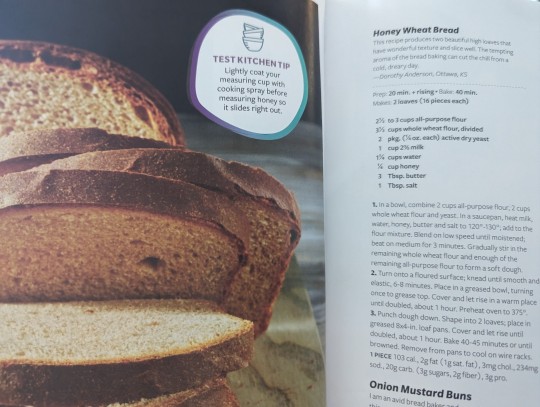



what bread do I make tho....
#i wanna try a new one from my taste of home magazine#leaning towards no-knead harvest bread#or the honey wheat bread but i will have to substitute the whole wheat flour#the rosemary garlic bread also looks soooooo goood hmmm
4 notes
·
View notes
Text
Speaking of my grandmother, she's writing a cookbook. And the sibling and I have been recruited as editors - because we both love that sort of thing.
Mostly it's been really fun going through it all, and the memories that go with it, but also? I can't eat most of what's in that book, at least without serious modification. And it makes me a bit sad. This cookbook is explicitly about tradition and family memories, and I feel a bit cut off from that. It's not just me either - we have two other family members with gluten intolerance, and a few other food restrictions. My grandma has talked about trying to label gluten free recipes, but as is, this book just makes me feel left out. It's not even like I blame her for it - it's just the way everything is when you have a major food intolerance or allergy, especially one so ingrained in your culture. And the way it is really sucks.
#i did leave notes on the cinnamon roll recipe for how i modify it. because it's more complicated than just substituting gf flour.#you can't roll out any gf bread dough I've ever met. pizza dough on the other hand...#hylian rambles#food tw#food issues#food intolerance#family drama#not that dramatic by my grandmothers standards thankfully#i might be a bit grumpy and sad today#on account of getting glutened yesterday#this is an actual gluten symptom for me
6 notes
·
View notes
Text
Eternally laughing when people are insist ‘in cooking you can do what you want but in baking the recipe is law and wow betide those who break it’ like. darlings. Baking recipes are not immutable laws of the universe. You can experiment - if you know what you’re doing.
As a semi-accomplished baker, you will be able to identify which rules are law and which rules are flexible. You will learn substitutions and on-the-fly tricks. You can stop a buttercream from breaking, if you’re very good and very fast.
But you have to know what you’re doing.
#baking#you CAN break rules you just can’t break them blindly#eg don’t substitute cake flour for bread flour#but DO substitute melted butter for oil#(these are very loose examples and a better baker than me may disprove the bread v cake flour thing even)#try fidgeting and amending your recipes#just…have an idea of what the thing you’re changing did first before you change it#it’s more relaxed than you think I promise#it’s just not as forgiving as cooking#when it goes in the oven that bitch is untouchable and in the gods hands now#(usually)#but I promise the baking gods won’t bite you if you add a little extra vanilla extract
6 notes
·
View notes
Photo

Sourdough Pizza Crusts - Pizza Dough and Crust
This homemade sourdough pizza crust recipe yields 6 crusts, which can be frozen and then cooked whenever the craving strikes.
0 notes
Text
I love watching baking videos where they like. Meticulously measure all the ingredients out into individual bowls and then add them one at a time mixing as they go.... you guys live like this???? Just slap those ingredients into the bowl directly from the scales, mix it up once it's all in there, stick it in the pan/tin/muffin case and call it a day
#i know there are some recipes where it might make a difference but honestly#the only times ive had bakes go wrong its been like. forgot a rise. mistook the icing sugar for flour (i was 12 pls go easy on me)#tried to 1:1 substitute glutenfree flour not realising you can't really do that with breads#live free babies dont chain yourselves to the washing up
0 notes
Photo
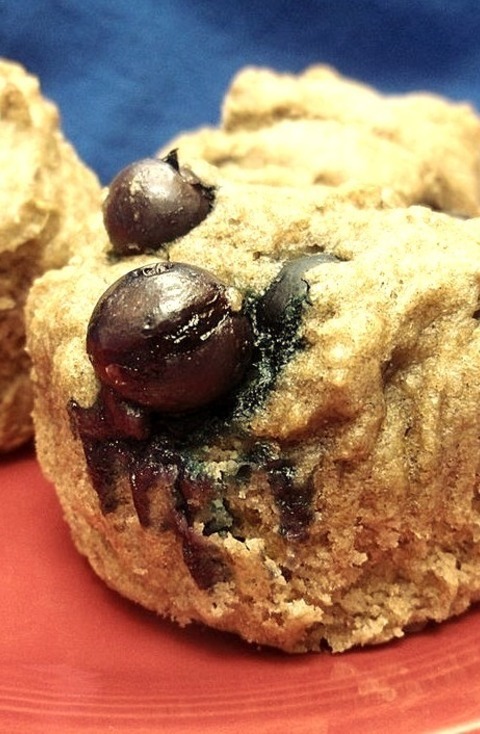
No-Sugar-Added Blueberry and Banana Wheat Muffins
Get a sweet tasting muffin using just Bananas and blueberries as the sweetner.
0 notes
Photo

Sourdough Pizza Crusts - Pizza Dough and Crust
This homemade sourdough pizza crust recipe yields 6 crusts, which can be frozen and then cooked whenever the craving strikes.
0 notes
Photo

Yeast Bread - D's Whole Wheat Challah
#This is a simple braided challah#glazed with egg. Half the flour is whole wheat for a hearty flavor. It is sweetened with sucralose sweetener#but you can substitute sugar. wheat challah recipe#challah#loaf#challah bread recipe#oats
0 notes
Text
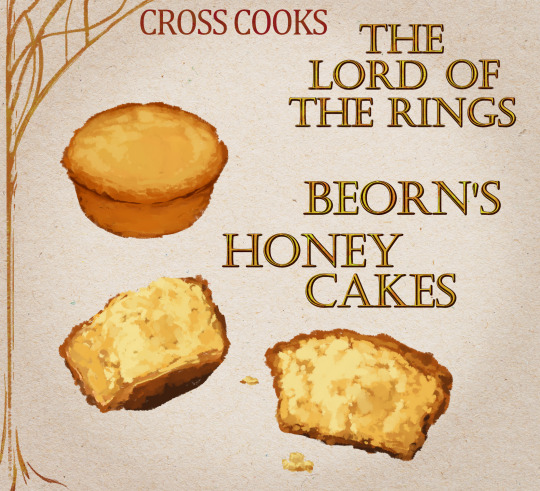
G'morning all! Its nice to get back things,. Theres been some roadblocks with med shortages and life, and also with the material for these recipes. So far we've covered a lot of pastries, not because theyre mentioned more often in the series, but because being mentioned lends them more specificity in flavor than things like gravy, peas, or various meats. The latter can be prepped, seasoned, and served in so many different ways that it feels harder to make them 'faithfully' because a packet of instant potato mash is just as faithful as a pot of buttered potato mash. Baked goods tend towards 1, maybe 2, 'base' recipes that get altered and added to.
Today, we'll be making Beorn's Honey Cakes! A dish from one of my partners favorite characters- a delectable little treat befitting the… warm personality of the character.
(As always you can find the cooking instructions and full ingredient list under the break-)
MY NAMES CROSS NOW LETS COOK LIKE ANIMALS
SO, “what goes in to Beorn's Honey Cakes?” YOU MIGHT ASKSimple stuff! Simple sweet stuff!
All-purpose flour
Baking powder
Salt
Ground nutmeg
Unsalted butter
Whole milk
2 eggs
Honey
Vanilla extract
The veins of honey cakes ancestry can be traced back to any moment where people began baking bread. Honey is a natural preservative, and sweeter still on its lonesome.
AND, “what does Beorn's Honey Cakes taste like?” YOU MIGHT ASKLike your aching muscles repairing themselves
Tastes like a honey graham cracker
But the texture is softer, wetter- somewhat like banana bread
Oh, and this will make your house smell So So Good
If you can resist the temptation of eating them immediately, they taste even richer the day after baking
Would pair well with milk green tea
Would also pair well with fresh orange slices (or those chocolate 'orange slices' candy)
Genuinely don't forget to flip them upside down when they go to bake the second time, not sure what it is but i was curious and did a test where i flipped half of the batch upside down and kept the other half of the batch right-side up like they cooked in the muffin tin. The ones i flipped upside down universally had a more consistent texture and the honey was able to permeate further.
.where honey called for, used clover honey
-----------------------------------------------------------------------------------------------------------
From start to finish this recipe takes about an hour of work, give or take some negligible time for prep.
The batter is perhaps the babybird of all cake batters. The gloopy, protruding crumbs of butter, not unlike a squabs beady pupils visibly dark under its skin, break up the mass of sickly smooth and reassuringly sweet-smelling oak-colored liquid. You can feel the confusion of bees outside your home, wondering if this your attempt at making royal jelly.
Just like a babybird, it becomes more than the sum of its parts. Layer on that honey drizzle, layer it on thick, theres no risk of drowning subtle flavors. Its crisp edges will keep its form, springy and warm, inviting you as if you're not the one who crafted it (food you didn't cook always tastes better). The bees are sooooooooooooooo jealous of your opposable thumbs and muscular strength.
If you dont have eggs you could try substituting with apple mash. I can't vouch for it in this recipe but replacing eggs with mashed up apples for pancakes gives it adds a nice fruity flavor without changing the texture, and in theory should work here as well.
I give this recipe a solid 10/10 (with 1 being food that makes one physically sick and 10 being food that gives one a lust for life again.)
🐁 ORIGINAL RESIPPY TEXT BELOW 🐁
Ingredients:
270 grams all-purpose flour
1 1/2 tsp baking powder
1/2 tsp salt
1/4 tsp freshly ground nutmeg
1 stick unsalted butter
160 grams milk
2 eggs
110 grams your favorite honey
1 tsp vanilla extract
Muffin tray and parchment paper
Method:
Preheat oven to 350f
In a medium bowl, whisk together the flour, baking powder, salt, and nutmeg.
Add the butter and rub it into the flour with your fingers until the mixture resembles coarse crumbs.
In a small bowl beat the eggs until just combined. Pour in milk and then vanilla extract while stirring. Keep stirring vigorously while slowly pouring in honey.
Stir until the mixture is consistent in color.
Pour the liquids over the dry mixture and stir until just combined.
Pour the batter into a greased muffin tray, don't use any muffin paper/lining/cups.
Bake for 16 minutes, or until they reach their full height.
Carefully remove from the muffin pan and place the muffins upside down on a parchment lined tray.
Using a silicone pastry brush, generously cover the tops of the cakes with honey. Allow to sit for about 5 minutes to let the honey soak into the cakes.
Bake for an additional 8-10 minutes, or until the cakes are golden brown.
Remove from the oven and allow to cool.
2K notes
·
View notes
Text
For most of recorded history, Finland was one of the poorest corners of Europe, a backcountry inhabited by peasants who weren't merely illiterate, but whose spoken language did not even have a written form. People kept cattle and grew barley, oats, wheat and rye, and if the weather destroyed your crops you just starved. And if the weather destroyed everyone's crops, famine wiped out entire villages and foreign kings did not care.
During times of famine people made bread out of pettu, dried-up strips of pine trees' cambium and pholem - so the bit between the wood and the bark - ground up and either mixed into the scarce flour that was still left, or substituting flour altogether. It doesn't digest well, you can't eat it quite like bread - but it has more fibre than rye flour and actually fairly good content of some vitamins, and about a quarter of the caloric energy value.
Due to the last few, apparently pettu flour is actually sold in some herbalist shops along with other fancy luxury item natural products like seaweed and kombucha, and it's way fucking more expensive than regular flour. You can't harvest it yourself, either, since you can't scrape it out without injuring the tree and therefore it isn't covered by the free foraging law.
Modern well-fed, non-land owning millenials can't afford their ancestors' bleakest famine bread.
2K notes
·
View notes
Text
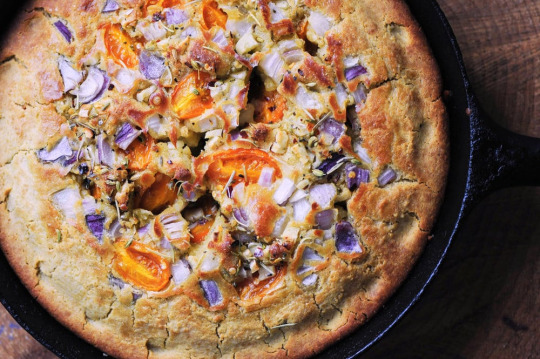
Fennel, Tomato, Rosemary and Onion Cast Iron Focaccia Bread (Gluten-Free and Vegan with vegan egg substitute)
#vegan#bread#foccacia#italian cuisine#tomatoes#rosemary#chickpea flour#tapioca starch#coconut flour#vegan egg substitute#red onion#fennel seeds#olive oil#chili#apple cider vinegar
17 notes
·
View notes
Text
What Ukrainians ate to survive Holodomor
(translated excerpts from an Історична Правда article): + images source
The villagers would dig up the holes of the polecats to find at least a handful of grain hidden by these animals. They pounded it in a mortar, added a handful of oilcake (from hemp seed), beetroot, potato peelings, and baked something from this mixture.
Those who managed to hide at least a little grain would grind it in iron mills made from wheel axles and cook "zatyrukha" (a concoction made from a small amount of flour ground from ears of grain).
Acacia flowers were boiled and eaten raw, and green quinoa was mixed with crushed corn cobs. Those who could - and this was considered lucky - added a handful of bran. This food made their feet swell and their skin crack.
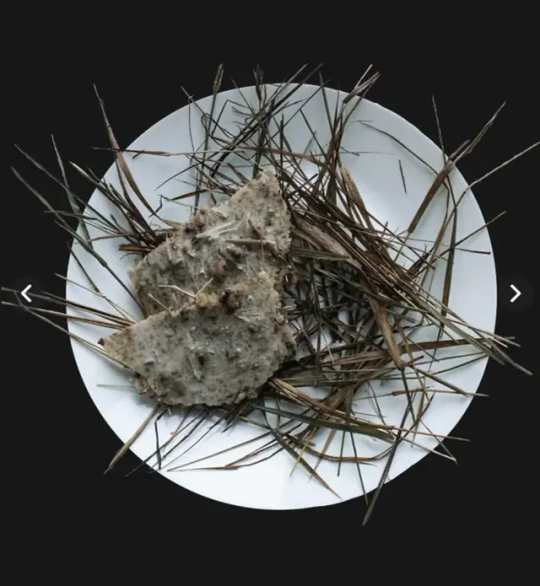
The peasants dried the husked ears of corn and millet husks, pounded them, ground them with weeds, and cooked soups and baked pancakes. Such dishes were impossible to chew, the body could not digest them, so people had stomach aches. Pancakes, the so-called "matorzhenyky", were made from oilcake and nettle or plantain.
It went so far that peasants would crumble straw into small chips and pound it in a mortar together with millet and buckwheat chaff, and tree bark. All this was mixed with potato peelings, which were very poisonous, and this mixture was used to bake "bread", the consumption of which caused severe stomach diseases.
There were cases when village activists took away and broke millstones, mortars, poured water on the heat in their ovens. After all, anything found or saved from the food had to be cooked on fire, and matches could only be purchased by bartering for their own belongings or by buying them in the city, which was impossible from villagers that were on "black lists".

Chestnuts, aspen and birch bark, buds, reed roots, hawthorn and rose hips, which were the most delicious, were used as food substitutes; various berries, even poisonous ones, were picked; grass seeds were ground into flour; "honey" from sugar beets was cooked, and water brewed with cherry branches was drunk. They also ate the kernels of sunflower seeds.
Newborns had the worst of it, because their mothers had no breast milk. According to testimonies, a mother would let her child suck the drink from the top of the poppy head, and the child would fall asleep for three days.
In early spring, the villagers began to dig up old potato fields. They would bake dumplings from frozen potatoes, grind rotten potatoes in a mash and make pancakes, greasing the frying pan with wheel grease. They also baked "blyuvaly" (transl. "vomities") from such potatoes and oatmeal mixed with water, which was so called because they were very smelly.

They ate mice, rats, frogs, hedgehogs, snakes, beetles, ants, worms, i.e. things that weren't a part of food bans and had never been eaten by people before. The horror of the famine is also evidenced by the consumption of spiders, which are forbidden to kill in Ukrainian society for ritual reasons.
In some areas, slugs were boiled into a soup, and the cartilaginous meat was chopped and mixed with leaves. This prevented swelling of the body and contributed to survival. People caught tadpoles, frogs, lizards, turtles, and mollusks. They boiled them, adding a little salt if there was salt. The starving people caught cranes, storks, and herons, which have been protected in Ukraine for centuries, and their nests were never destroyed. According to folk beliefs, eating stork meat was equated with cannibalism.
The consumption of horse meat began in 1931, before the mass famine. People used to take dead horsemeat from the cemeteries at night, make jelly out of it and salt it for future use.

Dead horses were poured with carbolic acid to prevent people from taking their meat, but it hardly stopped anybody. Dead collective farm pigs were also doused with kerosene to prevent people from dismantling them for food, but this did not help either.
After long periods of starvatiom, the process of digestion is very costing for the human body, and many people who would eat anything would drop dead immediately out of exhaustion.
If a family had a cow hidden somewhere in the forest, they had a chance to survive. People living near forests could hunt/seek out berries and mushrooms, but during winter this wouldn't save them. People living near rivers could fish in secret, but it was banned and punishable by imprisonment/death.
681 notes
·
View notes
Text
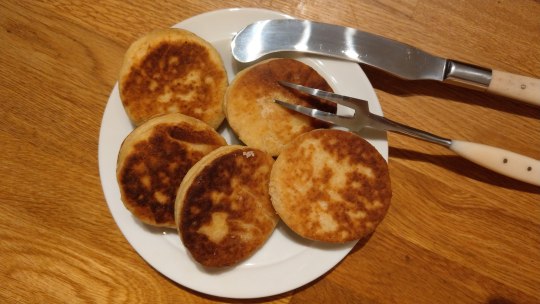
As mentioned more than once, @dduane's Middle Kingdoms don't have potatoes. A frequent alternative is parsnips, and the fried cakes in that photo are the result of an experiment done earlier this week to see if parsnips can substitute for potatoes in our always-reliable potato cake recipe.
Yes, they can!
*****
Here's @dduane's recipe.
First peel three regular-sized parsnips. then top and tail them.
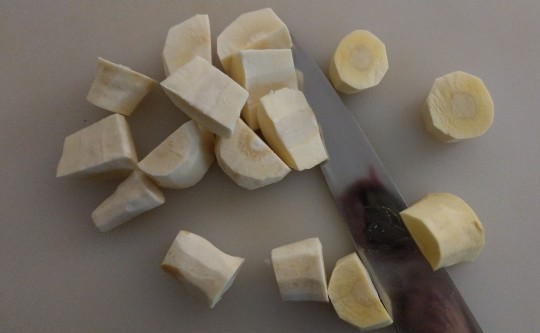
Chop them into chunks and boil them in about 2 pints (1 litre) of water.
Drain them and return to the pan: let them steam dry. Then, while still hot, mash them well with a hand masher and allow to cool completely.
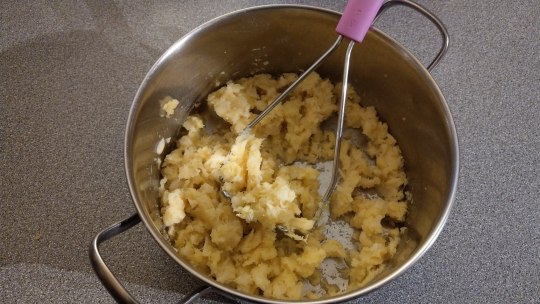
As mentioned further down, parsnips retain more water than potatoes even after steam-drying, so DON'T use a food processor or other power appliance for mashing or the result will be parsnip wallpaper paste. However, a processor is ideal for the rest of the recipe.
Put 2 cups (500g) all-purpose flour and ½ tsp salt into the processor bowl, blip the pulse switch to combine them then add 1½ tsp baking powder and blip again.
Now add 3 tablespoons butter and blip the pulse switch until the butter is completely worked in and the whole mixture has a cornmeal-y texture.
Now add the cooled mashed parsnips.
Process with the flour mixture, pulsing at first, then continuously, until the mixture comes together in a dough.
(If yours behaves the way our recipe did, no additional liquid should need to be added. The parsnips hold onto a surprising amount of water even after being steamed dry.)
Flour a work surface, roll the dough out about 1/3 inch (1 cm) thick, and use a sharp biscuit cutter to cut out into rounds. Then heat cooking oil in a frying pan to medium heat and put five or six of the cakes into the hot oil.
Fry until the cakes begin to rise a little (usually 4-5 minutes) and are going golden brown Turn and fry the cakes on their other sides for another 4-5 minutes. Test one for doneness: if necessary, turn the cakes once more and give them another 5 minutes or so.
Then cook the rest of the cakes in the same way. When they're done cooking, drain on paper towels until they're cool. Eat fresh or, to keep them, put them in a biscuit tin or other airtight container.
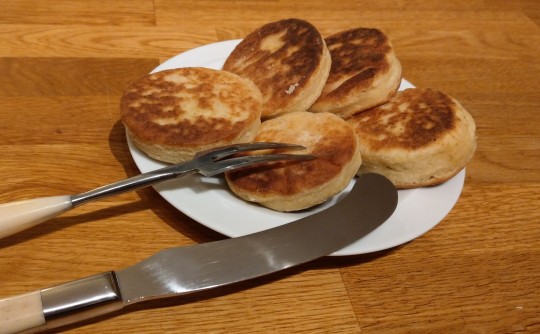
They'll keep for a few days. The parsnip flavor mellows somewhat the day after you bake them.
Like their potato-cake cousins, they're very good split, toasted, buttered and topped with a slice of cheese or (and) salami. They also shine as an accompaniment to bacon or sausages; give the parsnip cakes a brief re-fry in the fat left from frying these, then serve alongside the fried meats, dressed with a splash of Worcester or HP sauce and maybe a dotting of Tabasco or similar.

Our next experiment will be to make this recipe with the addition of some crumbled crispy bacon, grated cheese, grated onion or a combination of same.
The experiment after that will be to see if this can become parsnip bread in the same way as Irish potato farls. I think it will... :->
484 notes
·
View notes
Text
𓍊𓋼𓍊𓋼 Wild Plant Lore 𓍊𓋼𓍊𓋼
Some notes from my BOS of weeds / local plants that can be used in one's craft. Includes magickal correspondences, traditional uses (medicinal and culinary), and some of their folklore.
Disclaimer at the end !!
𓍊𓋼𓍊𓋼𓍊𓋼𓍊𓋼𓍊𓋼𓍊𓋼𓍊𓋼𓍊𓋼𓍊𓋼𓍊𓋼𓍊𓋼𓍊𓋼𓍊𓋼𓍊𓋼𓍊𓋼𓍊
Acorns- the nuts of oak trees. They're made of one seed covered by a tough shell with a cap on top. These nuts can be eaten and are turned into flour to make breads and pastas. Much about acorns are unknown as they are mainly unused in everyday life, but we do know that they contain a high fiber content which has been used to treat bloating, diarrhea, stomach pains, and other digestive issues. Because these nuts come from oak trees they’ve been a symbol of great wisdom and longevity in many cultures such as Celtic and Nordic. Many people have worn necklaces with acorn charms on them to bring protection
• Protection, prosperity, growth, wisdom
Bull nettle- Thick stock and toothed leaves with stiff prickly stinging hairs, the flowers are small, white, and covered in hispid. The seed pods are lightly coloured and cylindrical, containing ~3 seeds. Touching this plant will cause a stinging, burning, or itching sensation that will last for hours. The seeds from the seed pods are edible and taste nutty but need to be harvested with extreme care as to not sting yourself. The seeds can be roasted or ground into a "cornmeal." The root of bull nettle is edible, it's similar to a potato but tougher and the core is so tough it should be discarded.
Binding, banishing, warding, baneful (to cause pain)
Cattails- Cattails are semi-aquatic plants that consist of multiple long spiked leaves with one center spike holding a sausage-shaped head that is filled with cottony seeds. Their rhizomes can be turned into a flour with a high protein content and the shoots can be cooked and eaten. The stems and leaves can be turned into paper. A poultice from the roots can be used as an antiseptic, for burns/cuts, and to reduce inflammation. When harvesting this plant please do not overharvest, it’s a very important part of a wetland’s ecosystem ! Also, always make sure the water near the cattails is clean because cattails filter pollutants out of the water so if you plan on consuming the plant, you could also be consuming those pollutants.
Fertility, growth, prosperity, peace, water-associated magick, cleansing
Catchweed- Also known as cleavers, hitchhikers, goosegrass, or sticky weed. Catchweeds are branchy, square stems that latch onto other plants and buildings with small hooked hairs on their leaves and stems. They have tiny, star-shaped, green or white-ish flowers with four petals. They also have small burrs that contain a few seeds that are covered in hooked hairs so they can latch on to animals to disperse seeds. For those who want to risk getting pricked, catchweed is edible. Young leaves and stems can be cooked and eaten like spinach. This plant is also in the same family as coffee, meaning that you can dry and roast the seeds in their burrs to make a lower-caffeine coffee substitute and teas. Poultices have been made with the whole plant, as with tea washes from dried leaves, in many cultures for light burns, small wounds, and eczema. It has a cooling effect so it’s also used in infusions for bug bites, stings, and poison ivy.
Energy, binding, commitment, protection during travel
Chickweed- Also called chickenwort/weed, winterweed, and simply ground cover as that’s its primary use in modern society. Long stems with pointed, oval-shaped leaves and tiny white star-shaped flowers that resemble carnations. Its star-shaped flowers earned it the botanical name “Stellaria media”. Its flowers and leaves are both edible and are very popular in salads, soups, and stir-fries. It has a taste similar to sprouts that you’d use in a salad. Chickweed salves are used for skincare, poultices for poison ivy, and teas for digestion. Historically, it's been used for skin ailments like itching, dry skin, and even bruises or bug bites from a tisane/tea of the stems applied to the affected area. In European folklore, it was said to help promote a happy, balanced family and love life. This is believed to come from how chickweed grows so closely with all its stems intertwined but in a way that promotes each part to grow healthy, so it promotes everyone in a household getting along with one another while having their own sense of individuality. It’s also associated with perseverance (like most weeds I’ll admit), this is because chickweed is seen growing everywhere, in yards, in forests, on piles of dirt. If it sees an opportunity, it’ll take it and thrive year-round.
Love, stability, loyalty, communication, lunar-associated magick
Clovers- white, balled flowers with three to four small, round leaves. Every part of this plant is edible, the leaves and flowers are sweet and vanilla-y so they are good in teas and sweets. Clover has been used to ward off fevers and used in tisanes/teas for inflammation. Clover has been associated with good fortune for centuries, especially four-leaved clovers. A shamrock is a symbol of a three-leafed clover representative of the Christian Holy Trinity, it’s also believed that the Celtic druids thought shamrocks to be significant because they had three leaves possibly representing the underground, earth, and sky.
Luck, prosperity, happiness, faith
Creeping Speedwell- Teeny tiny violet/baby blue flowers with light yellow middles, it is incredibly fast-growing and can be found in most yards. Speedwell is edible and good in salads, pestos, and smoothies. Tea is made from the leaves and flowers to help clear congestion, allergies, and coughs. Some add it to their baths to help with their allergies and inflammation, inflammation is also helped by a poultice. In some folklore, it’s said that a tea or ointment from speedwell could help one with psychic visions and faerie sight. Before I truly knew the folklore behind speedwell I had this sense that it would help with your clairsenses.
Abundance, divination, psychic/clairsense work
Creeping buttercup- Buttercups are toxic and will leave blisters when raw so they must be cooked or dried before being consumed, even then it's not recommended to eat. A poultice of the (boiled) leaves is used for inflammation and wounds and a tea from the plant is used for its analgesic properties, but be wary of the blisters that may occur. Buttercups used to be used to ward off faeries, many farmers would plant these around their cows to prevent them from being stolen from the fae. There are a lot of stories relating buttercups to cows which is very very cute but ironic because buttercups are actually toxic to many animals! For its many associations with children, fairies, and coyotes across various cultures it can also be related to mischief
Youth, happiness, love, protection from fae, mischief (jinxes/hexes/glamours)
Creeping charlie- Also known as ground ivy. Creeping charlie has square stems with dark, rounded or fan-shaped, toothed leaves. It has small blue or lavender, funnel-shaped flowers that grow in clusters of two or three in the spring. Creeping charlie is edible and has a long history of being used in beer and cheese, it tastes subtly minty as it's in the mint family. Young leaves are good in salads to freshen them up and it's also really good in teas and sweets. There is a risk of it being toxic if consumed in large quantities though. For centuries now it's been used in teas to calm a cough, been said to help with headaches, and has been used on the skin to reduce pain and soothe inflammation. Some have turned it into a snuff and used it for congestion, kind of like Vaporub. It was actually brought over from Britain to the Americas for its medicinal uses, now it’s one of those weeds people will spend tons of money trying to get rid of. Alike creeping buttercup, it’s said that some may have used this to ward magick from their livestock and themselves. Some say it’s good to use to find out who has cursed you or sent the evil eye your way and in some stories, people would drink it as a tea to get rid of their shyness.
Protection from magick and spirits, divination, clarity, courage
Deadnettle- My favourite weed :) Square stem, fuzzy leaves that occasionally are red/purple at the top, with tiny tube-shaped light pink flowers. Despite technically being a nettle, it’s not a true nettle so very few people will have a reaction when touching this plant. Deadnettle is part of the mint family and every part of it is edible, despite that though it's not very minty and is floral and sweet. My favourite parts are the tiny pink flowers which have sweet nectar in them and are good in teas, syrups, sweets, and jams. The leaves are good in teas, smoothies, pestos, and salads. A poultice or salve can be made from the leaves for wounds and teas can help with allergies. This plant is sometimes called purple archangel because it pops up around the Feast of the Apparition when it was said St. Micheal appeared. It’s associated with determination because this lil dude will grow anywhere, even in spots with the worst quality soil.
happiness, determination, peace, healing
Dandelion- Dandelions are bright layered yellow flowers with toothed leaves that grow pretty much anywhere there is enough dirt to get their roots in. The entire plant is edible, the flowers are slightly sweet making them good for salads, syrups, and sweet. The leaves are slightly bitter but that can be lessened when harvested young or boiled, they're good as spinach replacements and can be dried for teas. The flowers can also be turned into dyes. The plant's name can be literally translated to 'healing herb' as it has been used in many cultures for it's gut health and detoxifying properties. Teas and tinctures from leaves are made for a diuretic and flowers are made into salves or beauty products to treat acne/eczema and to reduce inflammation. About dandelions being diuretics - the name dandelion comes from the french name dentdelion (tooth of the lion) but there’s actually a second French name, “pissenlit”, which means piss the bed !!
luck/wishes, communication, balance, courage, youth
Daisy- Daisies are low-growing flowers with thin, long, white petals and yellow disc florets (middles). Common daisies are edible, these are really found growing anywhere even in your lawn. Leaves can be used in salads or stir-fries and flower heads can be pickled or used in salads. Wines, soups, and teas are also commonly made from daisies. The flowers have a slightly bitter taste but look pretty in dishes. Daisies have been used in teas for coughs, bronchitis, and common colds. It's also been used to "stimulate the digestive system" to promote appetite. Daisies have been into lotions and other skincare products to treat rashes, eczema, and other skin issues. Daisies came to be associated with love and motherhood through it being the flower of Freya, innocence/purity through the story of Vertumnus and Belides where the flower gets its scientific name, and purity the popular phrases like “fresh/clean as daisies”.
Happiness, cleansing, love, purity (cleansing), motherhood/childbirth
Feverfew- Feverfew are daisy-like flowers with bright yellow middles and white petals, with yellow-green leaves in a feathered arrangement, that grow in small bushes together. Feverfew is edible but many will steer clear of it as it has a very bitter taste. It’s often made into teas and used in pastries. Although feverfew isn’t used to reduce fevers anymore, there are still many health benefits and medicinal uses of the plant, some people even calling it ‘medieval aspirin’. People will take feverfew pills or apply a poultice to relieve pain from arthritis and inflammation. A poultice can also be applied to minor cuts, scrapes, and bug bites. Teas can be made for headaches and some use it to help with menstrual pain. Feverfew is also known to show some skin benefits by reducing redness and inflammation. Feverfew may increase bleeding as it acts similar to an anticoagulant, because of this it is advised that if you are taking a blood thinner like aspirin, Dabigatran (Pradaxa), Heparin (Innohep), or others, you talk to your doctor before taking feverfew. This plant has more medicinal uses than references in mythology but I did find a few references to it being believed to be able to save the life of someone that had fallen from the Parthenon, a temple to Athena, which gave it the scientific name parthenium.
Healing, curse-breaking, love
Lesser celandine- Also known as pilewort or sometimes fig buttercup. Pilewort is a plant on the buttercup family that has dark, heart-shaped leaves and bright yellow flowers with glossy petals. Despite its pretty exterior, touching the plant could cause rashes or blistering especially when the plant is crushed. Ingesting the plant can cause dizziness, vomiting, and worse. While there may be ways to cook out the toxins, I cannot advise anyone to consume this plant without proper experience. This plant is also known as the spring messenger as it's one of the first plants to bloom in the spring. Lesser celandine was referenced a lot in literature, most being about love and foreshadowing happiness alike how it signals spring.
Joy, love, Spring associated magick
Maple seed pods- Maple seeds, also known as helicopters or samaras, are the seed of maple trees, as one would assume. These are winged pods consisting of a papery tissue surrounding a single seed that is usually joined together in pairs of two. The seeds are edible once the outer covering has been removed and taste better while young, becoming bitter as they mature. Some say that smaller pods taste sweeter and larger ones taste more bitter. They're good in roasts, stir-fries, and salads. They can also be dried and pounded into flour ! Much of what we know about maple seeds are simply culinary and there's not much information on their medicinal uses. The majority of the correspondences of maple seed pods come from maple trees which represent balance and longevity. They also are associated with childhood after the many many years of children playing with these helicopter-like seeds.
Longevity, growth, balance, youth
Mulberries- Mulberries come in three different colours which are red, white, and black. Different mulberries grow on different mulberry trees. Black mulberry trees have an orange-y-toned bark with toothed, heart-shaped leaves. White/red mulberry trees have a greyish bark with large, deeply lobed, oval-shaped leaves. Mulberries look very similar to blackberries but longer with each cluster of fruit containing a seed. Mulberries are edible, black ones taste the best and can be both sour and sweet and the white/red ones are duller in flavour but sweet. These are made into jams, syrups, wines, sweets, sorbets, really anything sweet and it tastes great ! These berries are more known for their culinary uses but some studies suggest that they can help reduce cholesterol and improve digestion. In Greek/Babylonian mythology, red mulberries came from white mulberries that were stained red from the deaths of the star-crossed lovers Pyramus and Thisbe which gave them the association of love and death.
Love, death, faith, wisdom
Osage oranges- Also known as horse apples or hedge apples. Osage oranges are a yellow-green fruit with a very rough and bumpy peel. These oranges grow on trees called Maclura pomifera. The wood of these trees are used for very good firewood and yellow-green dyes. The Osage natives would use the wood from the tree for many things like bows and boats as it’s very flexible. The roots of the trees are sometimes made into water infusions to help with eye conditions. People have also used the wood, or even sat out the fruit, to deter insects. Osage oranges are edible but most people, and even animals, will avoid eating them due to their dry and bitter taste. They taste like very bitter and citrus-y cucumbers. These oranges can cause skin irritation to some.
Warding, protection, strength
Pinecones- Pinecones are geometric cones that come from conifer pine trees that produce pollen or seeds depending on their sex. Pinecones symbolize fertility and life in many cultures and have been used in artwork for centuries. The pineal gland in the brain was named after pinecones because of its shape, this gland is sometimes referred to as the “third eye” and some believe that it acts as a witch’s eye would; this is how pinecones were tied to the idea of enlightenment and rebirth as well as the fact that they have been around for so long. Some conifer cones are edible (some aren't!) but they are very tough to chew so you must boil them before eating, pinecone jam has been commonly made from young cones. Pine has been used in teas, tinctures, resins, and many other things to treat coughs, allergies, and help with sinus infections.
Fertility, creativity, prosperity, enlightenment, rebirth
Prickly lettuce- a quite tall, red stem that contains latex with large tooth-shaped leaves that have prominent veins and spikes lining its edges and main vein on its underside. When it blooms it has small, pale yellow flowers. This plant is edible and is pretty much used like normal lettuce while having a slightly bitter taste, as usual, this gets less noticeable as it matures. Leaves can be eaten in salads or cooked/steamed and the root can be made into a tea. The latex substance that comes out of the leaves and stem when injured is called lactucarium which is known as lettuce opium due to its sedative and pain-relieving properties; the process of harvesting this substance is tedious. This can be used to help people sleep, relax, and relieve pain. Lettuce in general has a great amount of significant historical usage. Lettuce came to be associated with sex because an Egyptian fertility god, Min, was associated with lettuce as it was known as an aphrodisiac that was ritualistically ingested before sex. These effects were due to the lactucarium. In Hellenism, when Adonis died he was laid on a bed of lettuce along with other fast-growing plants. In festivals for him, they would burn withered lettuce and mourn his death, this related lettuce to death.
Necromancy, offerings for the deceased, fertility, sex
Queen Anne's Lace- Also known as wild carrot. A tall flowering weed with a thin, stiff stem and tiny white, clustered flowers. The flowerhead consists of a bunch of separate flowers, some plants may have a singular purple/pink flower. Queen Anne's lace's root is edible which is actually where it gets the names wild carrot and Daucus Carota, it's good steamed and boiled. It is pretty stringy and if you wait too long to harvest it can become very hard and woody. This plant is NOT safe to consume for those who are pregnant ! The stem is known to cause skin irritation and rashes to people with sensitive skin. Despite being edible, most wouldn't suggest eating it because it looks almost identical to poison hemlock which if consumed could be fatal. It also looks a ton like wild celery but that's less of an issue. Historically, the seeds of wild carrot were used as an abortant in a "morning after pill" type of way. Wild carrot was named Queen Anne's Lace after Queen Anne of England who was a great lace maker, there is a legend that when making lace one day she pricked her finger then a single drop of blood fell on it and that's why the flower has a single purple flower. Because of the association to Queen Anne, some would use it to try to attract love or make themselves look more beautiful. Wild carrot is also called bird's nest or the bishop's flower which ties it to themes of safety and sanctuary.
Beauty, love, glamours
Rosebay willowherb- Also commonly known as fireweed for its appearance or bombweed because it began to heavily grow in bomb craters/sites in WWII around the UK. The rosebay willowherb has tall reddish stems and willow-like leaves with long magenta flowers. Traditionally it's been used in teas, jellies, and salads. It has a pretty bitter taste so you need to harvest it young and cook it before eating. It's used in teas for its demulcent properties, to treat certain stomach conditions, and has been used in skincare because of its astringent properties. There’s not much folklore about this plant but it’s well known for appearing after events that devastated an area, it was one of the first plants to start growing after Mt. St. Helens, after colonizers burnt down forests, and after bombs dropped in WWII. I’ve also heard it’s bad luck to pick its flowers, either stating that a storm will occur or your mother will fall ill.
Courage, perseverance, change, bad luck
Stinging nettle- tall, heart-shaped, toothed leaves. The leaves are covered in small stinging hairs that when touched will inject chemicals into one's skin and cause slight stinging sensations. Young stinging nettle has widely been used in dishes as soaking/cooking it takes away the sting. It is very similar to spinach in taste, texture, and nutrients. Ointments are made to treat arthritis and inflammation, teas are made from dried leaves and flowers to treat allergies and hayfever. Poultices of the leaves were used for stiff joints and muscle pain by helping blood circulation in that area. Be wary of using stinging nettle on your skin as it can cause rashes and blisters. Some Native American groups used it in teas as a stomach tonic. In Celtic folklore, it was said to keep evil spirits and illness at bay, it also says that when you see thick strands of nettle it means that faeries are nearby.
Binding, protection from baneful magick and evil spirits, strength, curse breaking
Sweetgum seed pods- Also known as witch’s burrs or witch balls. Sweetgum seed pods are hard, spikey seed pods with small holes where the seeds once were. These fall from sweetgum trees after they mature and disperse their seeds. These aren’t edible nor really used for any medicinal purpose. They’re often placed around plants to protect them from animals. Magickally, you can place them around your space to ward off unwanted energies and entities or even grind them into a powder for banishing or protection. These things hurt like hell to step on so they’re also good to use in baneful protection magick, like baneful wards or return to senders.
Protection, warding, binding, baneful protection
Violet- There are many species of violets so I'm going to cover them in a broad sense. Violets are usually small, light purple flowers with short stems, little shrubbery, and heart/kidney/scalloped leaves. In many species of violet both the leaves and flowers are edible and contain high levels of vitamins A and C, but make sure to properly identify your plant before consuming. These can be made into teas, sweets, salads, etc. Violet syrup is my favourite ! Some leaves in wild violets will taste quite soapy, so try them out before cooking them into anything. Violet leaves have cooling and anti-inflammatory properties so they are used in poultices, salves, compresses, and oils for scrapes, burns, and bug bites. Violets have traditionally been used in teas or tonics for coughs and swollen lymph nodes. There is a lot of folklore and mythology that this flower is a part of. Violets are largely associated with modesty and innocence and this stems from two main stories; Persephone was said to be picking violets when Hades kidnapped her to live in the underworld and in Greek mythology when Apollo pursued a nymph, Artemis/Diana turned her into a violet to protect her. There are also stories in The Bible that associate violets with modesty like when Archangel Gabriel tells Mary she is pregnant, violets bloom around her. This is why sometimes when a child dies, violets are put on their grave as a representation of their innocence. There are many other popular stories of violets turning to tears when someone is crying. They’re also associated with love from a story of Venus and Cupid and were believed to be an aphrodisiac in the Middle Ages.
Femininity, respect, wisdom, modesty, divination, love
𓍊𓋼𓍊𓋼𓍊𓋼𓍊𓋼𓍊𓋼𓍊𓋼𓍊𓋼𓍊𓋼𓍊𓋼𓍊𓋼𓍊𓋼𓍊𓋼𓍊𓋼𓍊𓋼𓍊𓋼𓍊
Disclaimer !!: Before you consume or use a plant medicinally, make sure you are 100% sure on the ID. Speak with a doctor before using a plant, especially if you’re pregnant, and make sure you aren’t allergic and that it won’t interact with any of your medications. Do not substitute legitimate medications with herbal remedies, this is not medical advice. Always do your own research before consuming or using a plant medicinally. Some of the plants, while generally safe for humans, are not safe for animals and children. As a general rule of thumb, younger greens will taste better. As the plant matures and bears fruit it will typically become more bitter, so the best time to harvest most of these is before it bears fruit. Make sure to avoid areas treated with pesticides and always wash your takings before use. And make sure you're never over-harvesting, always make sure there's another 'patch' of the plant your taking !!
#herbology#witchcraft#witchblr#foraging#herbalism#green witchcraft#kitchen witch#wildcrafting#occult#magick#grimoire#book of shadows#correspondences#kitchen magick#beginner witch#baby witch#witch#witch tips#noctifer-og
3K notes
·
View notes